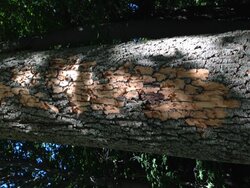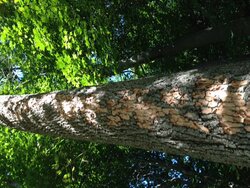This tree is about 50 ft tall and about a foot in diameter at eye level.
It looks like someone has taken a sharp chisel and worked it about 25 feet up the tree on the north side. The shavings are laying scattered around the base.
I've never seen anything like it, and don't see any more in the vicinity.


It looks like someone has taken a sharp chisel and worked it about 25 feet up the tree on the north side. The shavings are laying scattered around the base.
I've never seen anything like it, and don't see any more in the vicinity.




